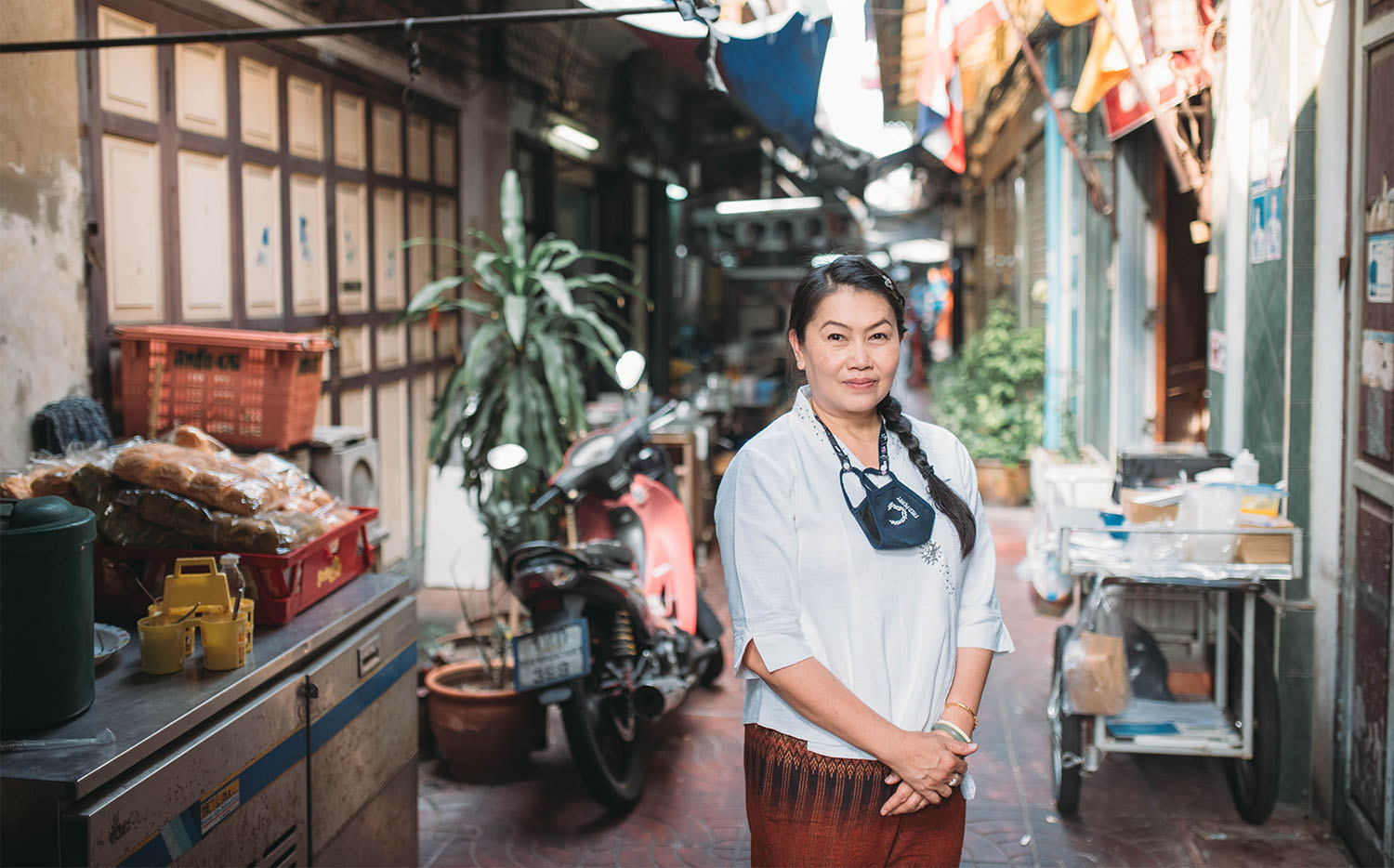SSaphan Han (Swivel Bridge) and Saphan Lek (Iron Bridge), Both bridges span across the Khlong Ong Ang Canal and are historic landmarks in Chinatown. Bangkokians associate Saphan Lek with Bangkok’s most famous toy market and Saphan Han for being a hub for textiles and a transit point into the Indian part of Bangkok. Since 2020, both places have received a new makeover as part of the government led initiative to revitalise Khlong Ong Ang. The project has won the government the UN-Habitat Asian Townscape Award in 2020. The toy market is no more and the clearance of Saphan Han has brought Chinatown’s last historic canal-side community to the fore, the historic community of Khlong Ong Ang.

Saphan Han Bridge late 19th century version
Khun Ratthawan Chaladchuenchom, nicknamed Pee Aum is a descendant of traders who sold their wares on top of the Saphan Han Bridge, back in the days when the bridge still bore the inspiration of Venice’s Rialto Bridge and Florence’s Ponte Vecchio. In the 1960’s t, the Bridge was dismantled and replaced with the current structure. Pee Aum inherited the family business and has sold textiles in a small shop along the canal ever since.
We sit down in this new, orderly world that the canal has become. Pee Aum, has a very open and friendly personality and a determined and optimistic outlook on her responsibility as a community leader. Like millions of Thai, including my own mother, she was born to Thai-Chinese parents.
“My father is Teochew and my mother is Thai. I was born and I grew up here. My grandparents arrived here from China by junk and were able to rent a space on the Saphan Han Bridge. They started the business here and it has been passed on from generation to generation, all the way to me. This is a historic place and our community connects with Saphan Han. Most people know Saphan Han as it has existed since the beginning of Bangkok in 1782. Basically the bridge derived its name from the fact that it could swing open to one side to let boats pass. That’s not possible anymore but if you come here on the weekend you can see people in kayaks passing underneath it.”
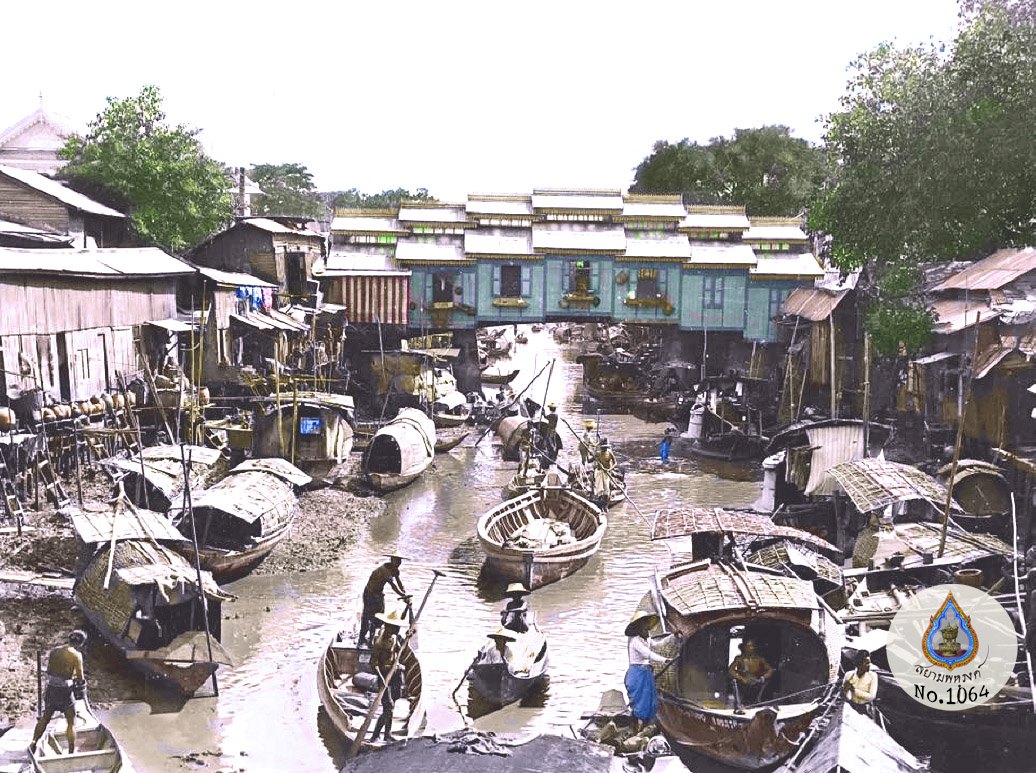
Saphan Han Bridge late, the Italian version built in the late 19th century.
Pee Aum takes me on a walk. She greets people here and there, she points, she laughs as if we’re walking through her living room and meet the family. “In the early days, many landings and wooden houses lined the canal. Traders from everywhere came here to exchange everything from rice to coal and things we use on a day to day basis. Especially earthenware and pottery down at the mouth of the canal. The goods that were traded here changed over time, from one era to the next from great grand parents to grandparents to my parents and now my generation. Back in the days we set up shops next to each other along the entire canal. I used to sell clothes on the bridge most people sell textiles, cosmetics and ladies items. The bridge was completely covered in plastic awnings. Those who came to visit Saphan Han didn’t even notice that it was Saphan Han. When you crossed the canal you weren’t even aware that a canal existed. Everything was built up and covered.

Khlong Ong Ang before the restoration.
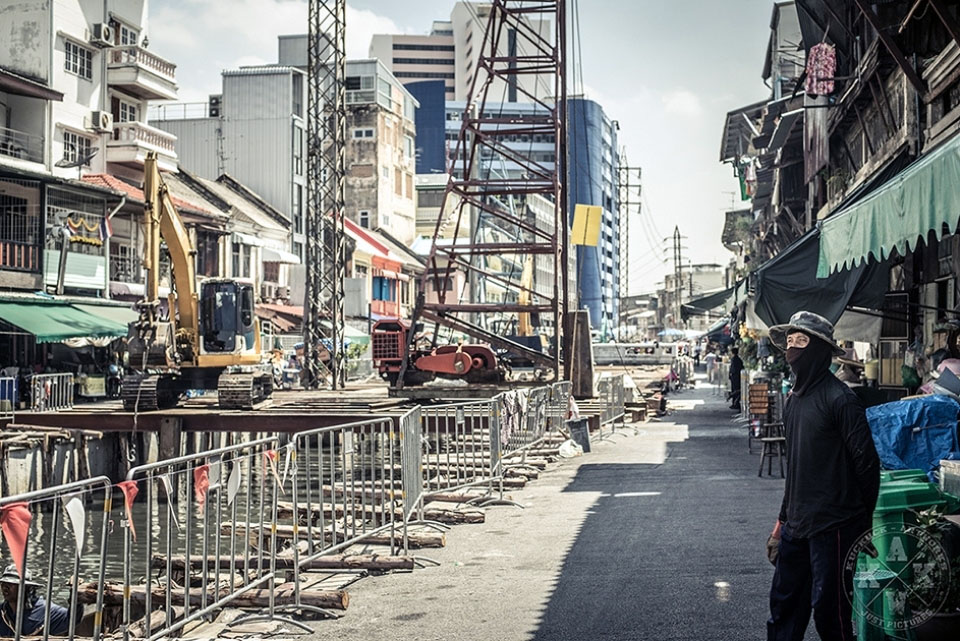
During the restoration

And after
Urban rejuvenation to turn Bangkok into a livable city by the time Bangkok turns 250. After an initial shock and uncertainty, the people of Bangkok can finally enjoy one of the city’s best places to stroll.
“We were initially quite shocked when we learnt that the government ordered the demolition of the market. We ran our businesses here since our grandparents generation. What would happen to our businesses if the space for us to sell is gone? Fortunately, most of the vendors are people from the community so they can sell from their houses such as the Chinese Chives shop. They used to sell their dumplings on the bridge but moved behind the house. Others who were less fortunate had to move elsewhere.
Pee Aum encourages me to try Guay Chai the crispy garlic Chive dumplings. They’re a speciality. Pee Aum speaks proudly about the fact that most shops here are multi-generational. The Guay Chai shop here is in the fourth generation and has built a legendary reputation. They even sell it in the U.S. now.
The Khlong Ong Ang community is what we would refer to as a Trok Chumchon, Chum Chon means community and Trok means narrow alley. It’s an elongated villages straddling on either side of a long alley on the east side of the canal. I love this alley. It’s a hidden world. Most visitors on the weekends understandably stroll along the canal but I still prefer the density of the Trok.
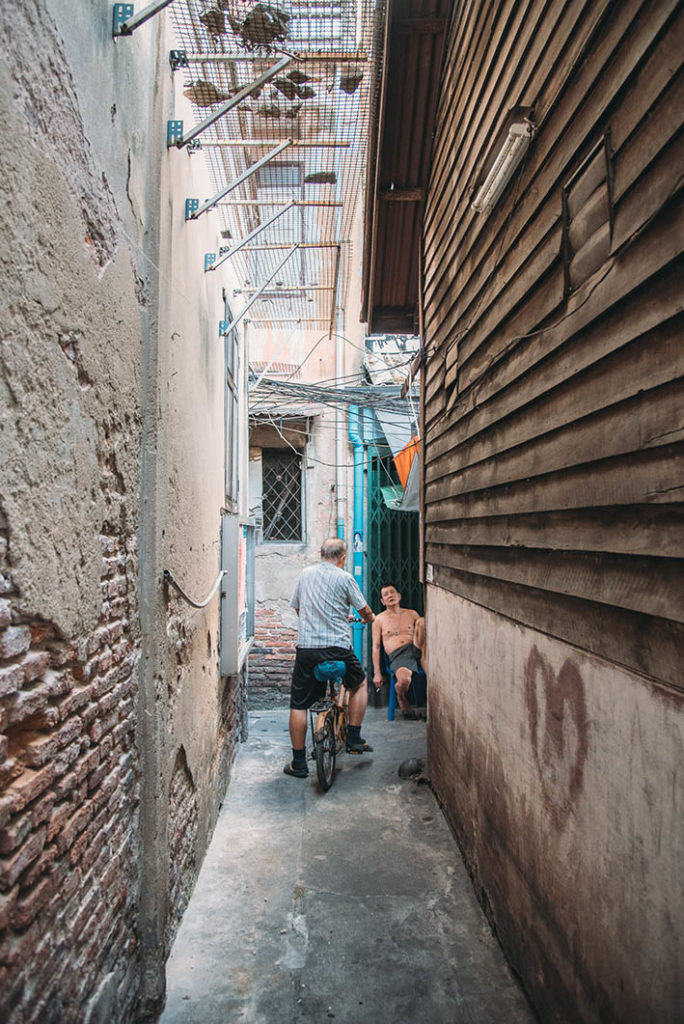
Life goes on as usual inside the Khlong Ong Ang Community
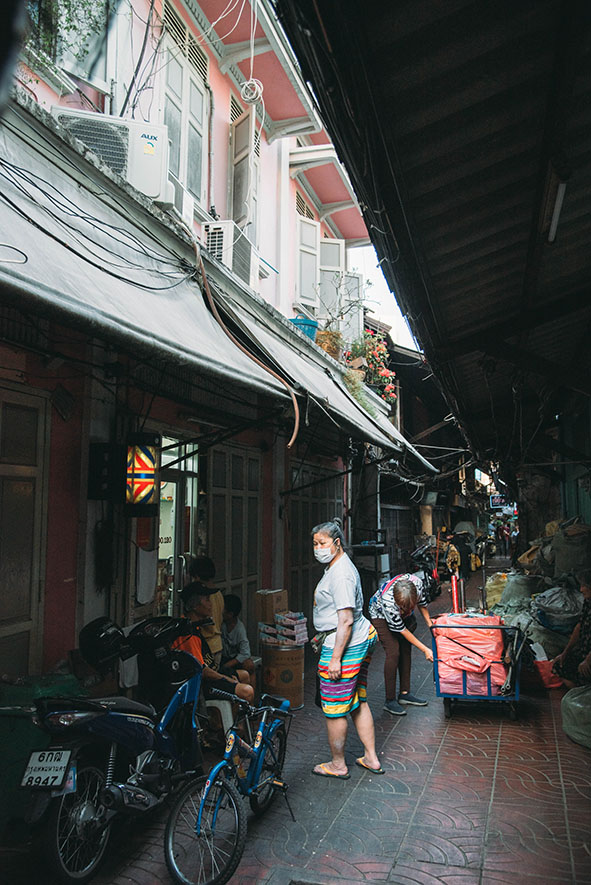
Beautiful alley of the Khlong Ong Ang Community
Pee Aum smiles in relief. “when we saw the area after the eviction, we realised that our community is actually very beautiful. We want to show this beauty to the world.” Indeed, with the plastic awnings and makeshift buildings gone, people can enjoy wide open space and the architecture along the canal. Many of the buildings are wooden structures which lends a warm almost rural feel to the canal, the heritage of bygone days, rare to come by in prime areas. And indeed the new Saphan Han Walking Street as the government terms it has become a new landmark and prime area in Bangkok.
“But there are still challenges. After the municipality launched the Saphan Han walking street, we locals joined hands to get the market up and running. We want our community to benefit from the new walking street. We contacted the district office to ask for permission to develop and allow not only the area along the canal for trade but the front of our houses too. I saw this at the historic market in Chiang Khan in the north of Thailand. We would like to install lights, so people can explore the historic alleys and buy and try things.
Since we are a historic community of roughly 300 people, there are many elderly here. It would be good if people could work from home. That’s our need, we want the community to develop and we want the community to be self-sufficient without the need to find jobs outside. I hope we can make this happen in the future.
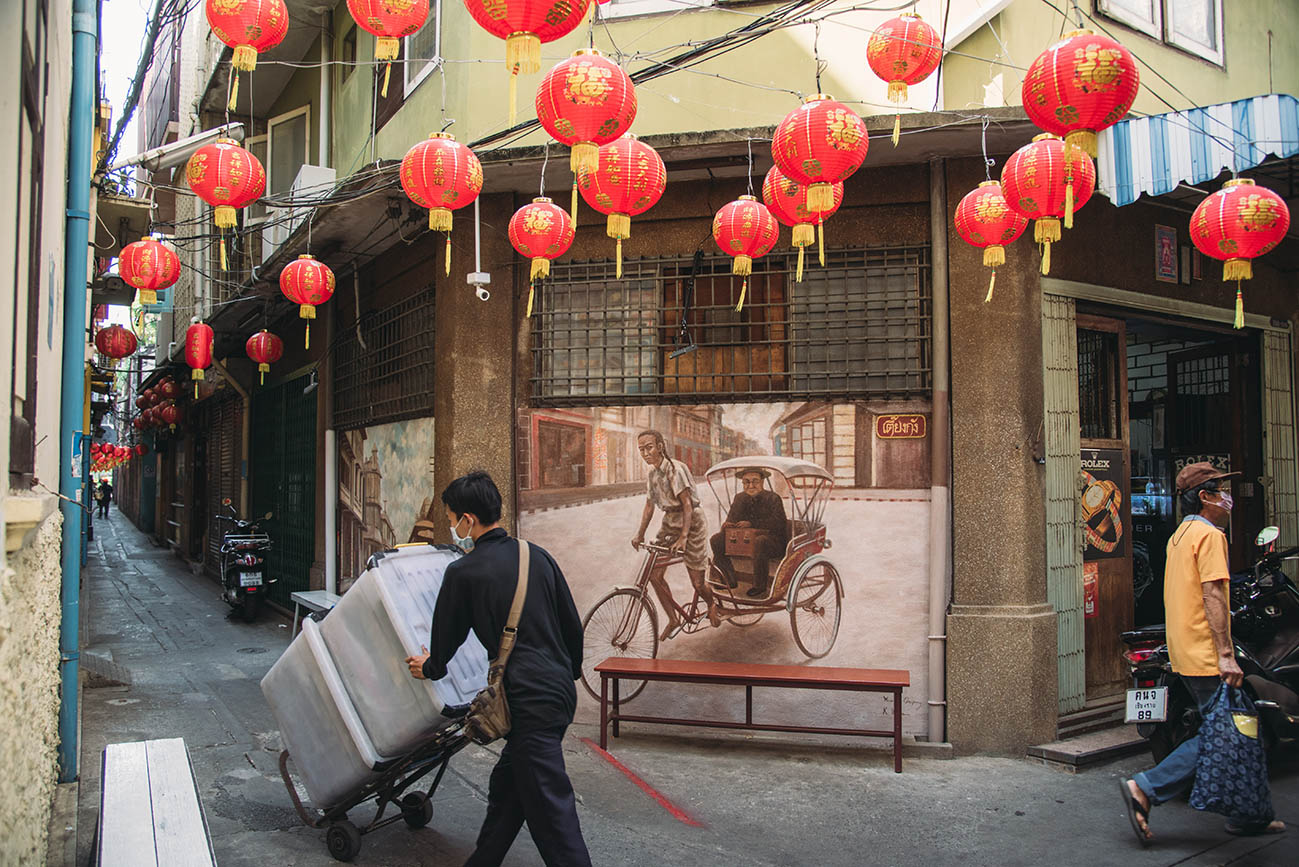
Renovating the inner alleys and installing lights. Just like the private alley of the Ama hostel.
As a community leader I represent the people of this community. There are 18 communities in the Samphan Thawong district. I know all the community leaders. We meet every month and discuss our communal problems and prepare our communications with the district office.
I look after around 300 families and I speak on their behalf when dealing with the authorities. Every month we have meetings with the district office and whatever we want to do, we need their approval but at least the officials will know what we need to develop or improve. My job is to be the voice of the community and to take care of people’s needs and any urgent issues. It’s challenging but I like challenges. I want to get the job done well to improve the community. So the question is whether I can do it or not. The job itself is not a stressful because I know all the people here. I have been a community leader for about a year and I was part of the committee before taking over this role. The previous community leader wasn’t in good health so the people suggested I should take over. So, I did and continued working with the people and I know what needs to be done.
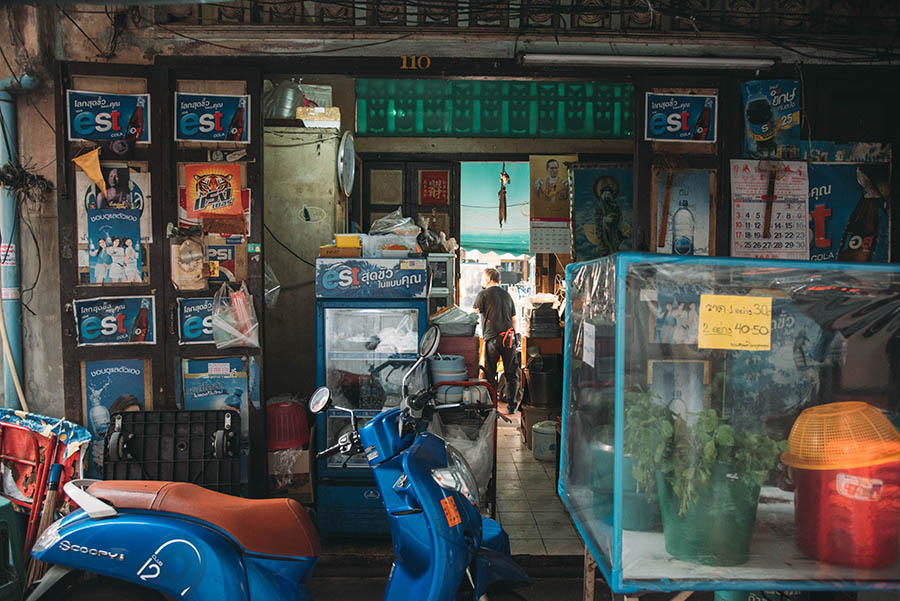
Local shops tugged away inside the alley. The goal is to build self-sufficiency in a community by allowing the elderly to sell from their homes, modelled after historic markets in other parts of the country.

Today’s multi-generation entrepreneurs, descendants of Teochew migrants from Chaozhou. Trust between locals and their representative is invaluable when dealing with bureaucrats on development issues.
The Khlong Ong Ang Community is located on the eastern side of the canal in the Sampanthawong district which is essentially Chinatown. The canal separates Chinatown from the Phra Nakhon district on the western side of the canal. Phra Nakhon like every of Bangkok’s 50 district is sub-divided into subdistricts and within sub-districts on a micro level you’ll find urban communities such as Khlong Ong Ang.
Pee Aum carries an aura of reassuring confidence. She explains the eastern side of the canal boasts Indian and South-Asian restaurants but there is no community. It’s mostly businesses hence government officials have to talk individually with the locals. The challenge is that locals don’t like when they are ordered to do this or that and often they don’t really understand the language of bureaucrats.
I look up the canal toward Saphan Lek. Entire neighbourhoods had been bought up by investors. I suspect this was the push to make the entire redevelopment project happen to pave the way for large scale property development that is coming in the future. Pee Aum looks at me unfazed. “I’m not afraid of outsiders to come and push us out. We’re a very tight-knit community with a strong connection to our place and we don’t want to go anywhere. We need to make our community stronger, develop it and keep ownership. We realised its beauty. There are still ancient brick buildings in the alleys. We have delicious food which has been sold since our grandparents’ generation. We have a story and I welcome everyone to visit and experience the charm of our community.”



